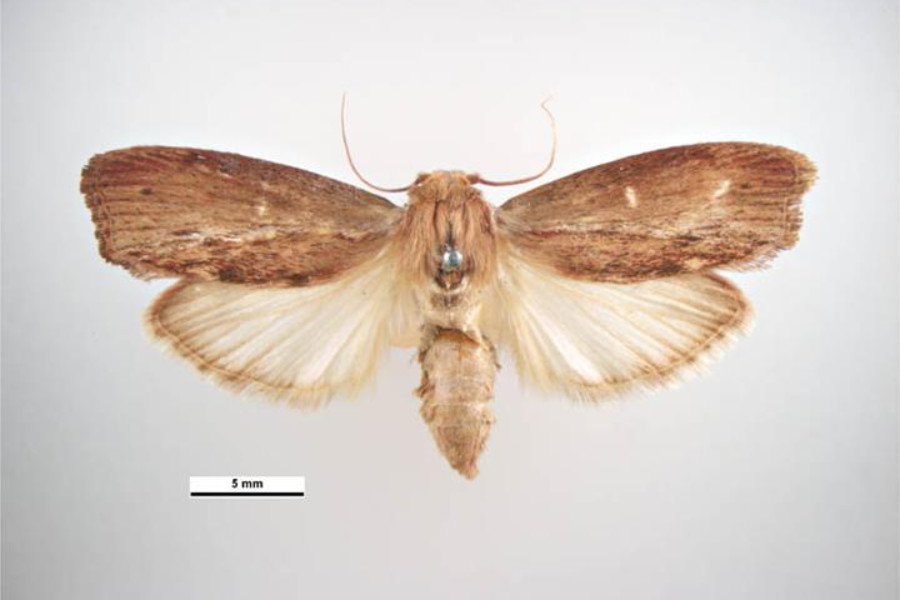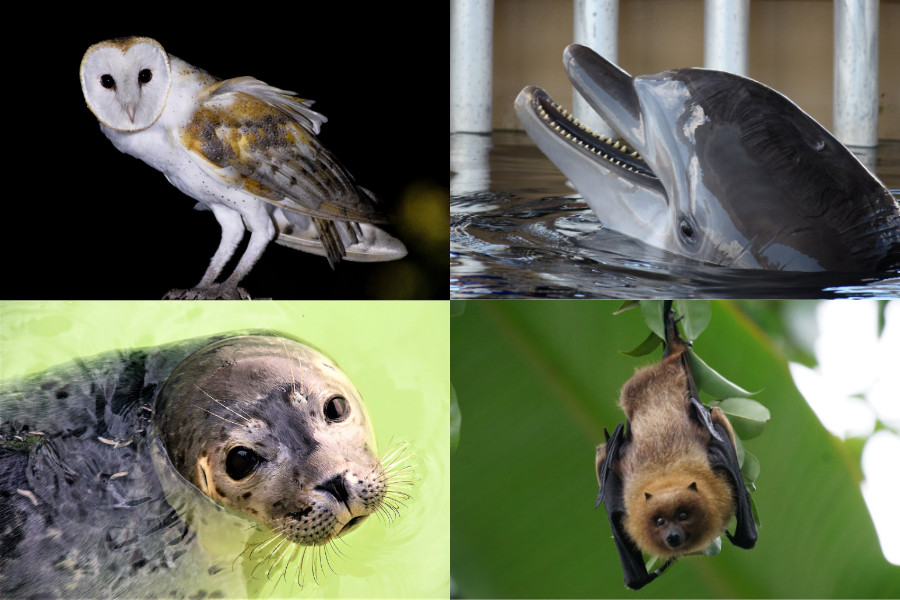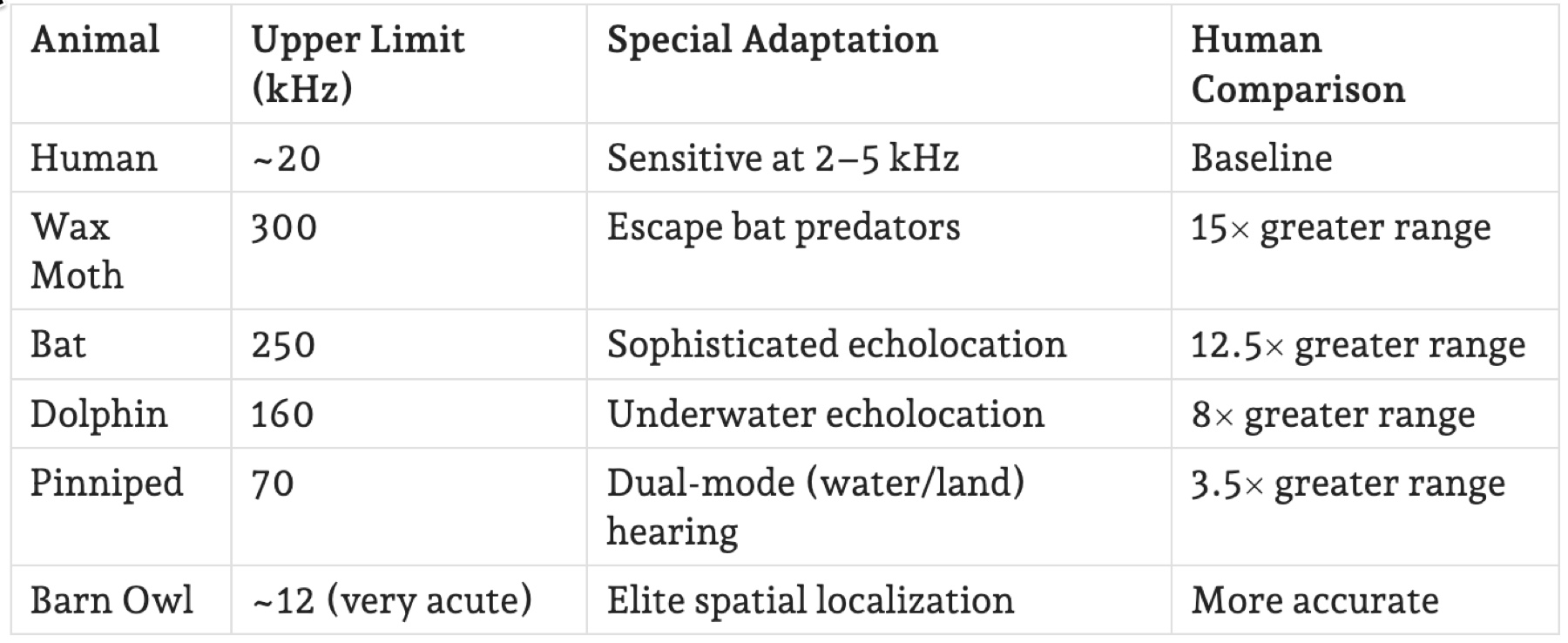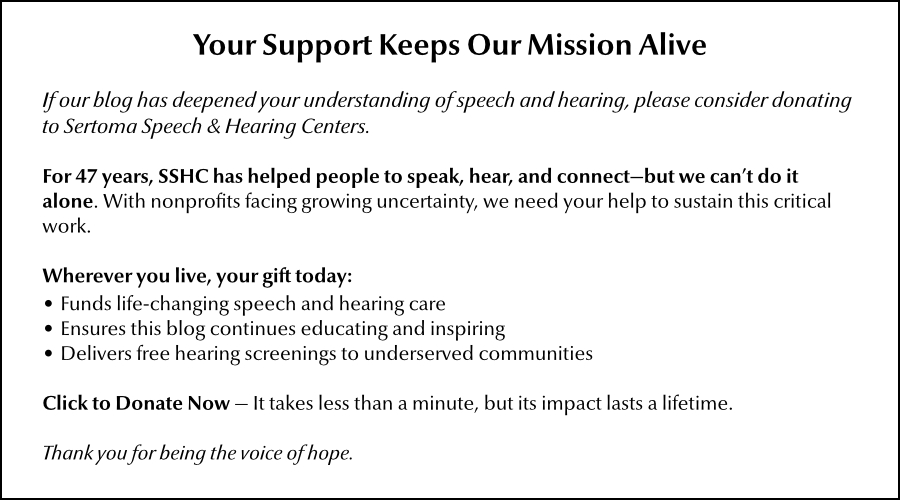Ranking the animal with the best hearing is surprisingly complex. While some creatures push auditory limits far beyond human capabilities, "best" depends entirely on what aspect of hearing you're measuring. The animal kingdom showcases remarkable diversity in how species hear and process sound.
Why it matters
There's no single animal with "the best" hearing because hearing capabilities vary based on different factors—sensitivity, sound discrimination, and localization—and are specifically adapted to each species' environment and survival needs.
How it works
Different animals excel in different auditory domains depending on their ecological niches. Barn owls, bats, dolphins, and pinnipeds each demonstrate extraordinary hearing abilities that serve their particular lifestyles and survival strategies. Let's take a closer look...

Master of frequency: The greater wax moth takes the crown for frequency range—it hears up to 300 kilohertz, about 15 times higher than humans’ upper limit of ~20 kHz. That lets it detect hunting bats before it’s too late.
Masters of sound location: The entire auditory system of barn owls has been shaped by their nocturnal hunting habits. Their facial feathers create a dish shape that funnels sound into their ears, while their right and left ears sit at slightly different heights. This allows them to detect tiny differences in sound arrival times between ears, enabling precise prey location—sometimes detecting mice beneath layers of snow or leaves.

Masters of echolocation: Bats and dolphins share the impressive ability to echolocate, creating mental maps of their surroundings using sound. Bats use large outer ears to collect sound waves, with specialized brain structures for auditory processing. Dolphins likely use fat deposits around their jaws to detect underwater sound waves. Both have special ear mechanisms that cancel out their own vocalizations to avoid deafening themselves.
The ultimate adaptors: Pinnipeds—seals, walruses, and sea lions—perform the "nearly impossible" feat of hearing well both above and below water. While most animals' hearing is optimized for either air or water, pinnipeds adapt by filling the empty space in their middle ears with blood while swimming. This allows sound waves to continue traveling through liquid, minimizing distortion. When returning to land, their ears refill with air for optimal air-based hearing. Researchers have observed seals reacting to sounds like crunching snow from as far as 1 mile away.
By the numbers

The takeaway
Nature crafts hearing abilities like custom tools, perfectly tuned to each animal's survival needs. A moth's high-frequency hearing might dodge bat attacks, while a seal's dual underwater and land hearing is like having two sonic superpowers.
The real magic isn't about who hears "best" — it's how hearing precisely matches each creature's lifestyle. Evolution is a brilliant problem-solver, designing sound systems that help animals thrive in their unique environments.
Protect your hearing, preserve your connections
Age-related hearing loss doesn't mean losing your social world. Our free 15-minute hearing screening can help you:
- Understand your current hearing health
- Prevent communication barriers
- Stay engaged with loved ones
- Maintain your quality of life
Schedule your free screening today and rediscover the sounds that matter most.
★ Call 708-599-9500 to schedule your free screening.
★ For facts about hearing loss and hearing aid options, grab your copy of The Hearing Loss Guide.
★ Sign up for our newsletter for the latest on Hearing aids, dementia triggered by hearing loss, pediatric speech and hearing, speech-language therapies, Parkinson's Voice therapies, and occupational-hearing conservation. We publish our newsletter eight times a year.
Don't let untreated hearing loss spoil your enjoyment of life.


